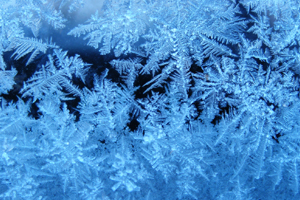


 By winterising your pool for the cold season you’ll ensure it starts the summer season as well as it ended it. Winterise your pool by following these methods minimise out of season maintenance time:
By winterising your pool for the cold season you’ll ensure it starts the summer season as well as it ended it. Winterise your pool by following these methods minimise out of season maintenance time:
1. Seek advice
The simplest way to make sure your pool is winterised effectively is to call in a professional to do it for you. Even if you decide to do it yourself, it still makes sense to seek advice from the professionals as the specifics of winterising your pool can vary depending on where you live, what type of system your pool runs on and a range of other factors.
2. Prepare
Once you’ve made the decision to close your pool down for the winter, make sure it stays clean for as long as possible by following these steps:
- Clear the worst of any debris from your pool using a net.
- Vacuum your pool thoroughly to remove excess debris and algae.
- Lower the water level to 6 – 12” below the skimmer to allow for rainwater (this is only necessary if you don’t have an overflow system).
- Adjust pH if necessary; the ideal pH for a pool in the process of being to be winterised is between 7.4 and 7.6
- Adjust calcium hardness and total alkalinity levels to prevent the surface of your pool from staining.
- Super-chlorinate your pool water to approximately 10ppm (you will need to add Stabilised Chlorine Granules at a rate of 20g per 1000 litres of pool water).
3. Add the right chemicals
There are specific winterising chemicals available from a local pool supplier which can be added to your pool. These products are long life algaecides which will protect your pool from algae, and increase chlorine and alkaline levels to help keep it clean over the winter. Be sure to carefully follow any instructions provided with the chemicals.
4. Drain the filter equipment
- Start by backwashing the filter thoroughly before turning it off.
- Remove and store the skimmer basket(s).
- Remove the plug at the bottom of the filter tank to drain the filter.
- Remove the drain plug, lid and basket from the pump and store away for the duration of the winter. If possible remove the pump and store it inside for winter.
- Disconnect the pool heater and remove the drain (plug if fitted).
- If your filter is positioned below the water level, insert winterising plugs into all the circulating fittings and open all gate valves to drain the system.
- Drain the automatic chlorinator, if fitted, remove chlorine and flush out.
5. Cover your pool
Don’t try to save money by using your summer solar cover – the freezing and thawing of the pool’s surface will damage it and you’ll be forced to replace it earlier than you would normally need to. Instead, clean it, dry it, roll it, wrap it in plastic, and store it somewhere dry and safe.
There is a range of winter debris covers designed specifically to protect your pool over the winter. For more information on these and covering your pool in general you may find our guide to pool covers useful.
Ultima is an automatic, four seasons cover from DEL that completely covers and secures your pool. Working as both a safety cover and a protection from debris, Ultima can be specified for a new build or retrofitted to an existing pool.
When installed in a new build, the Ultima cover is concealed in a ‘dry’ pit and retracts clear of the pool. The above-ground version of Ultima is suitable for refurbishment projects or free-form pools. In this version, the retracted cover is stored within a sturdy, poolside ‘bench’.
Also from DEL, the Ivernea winter cover is made from robust polyethylene fabric with a peripheral screen to filter rainwater and trap dirt and leaves, the Ivernea is designed for use between October and April and will keep slatted covers clean and protected against the damage of UV radiation, while helping to maintain water quality.
Easy to attach using its clip and elasticated cord system, the shield fits directly onto the cover slats with no need for unsightly fixtures on the pool surround.
When you come to cover your pool, install a floatation device in the centre before stretching the cover tightly over the top. This will prevent damage to your pool walls by stopping the surface from freezing over completely. Large empty plastic bottles can be good for this, but there are more effective products available specifically for this purpose.
Winterising your pool may require some effort, but it will prevent a lot of work being required when you come to re-open it again in the spring. Remember to use a dedicated winterising chemical and to seek advice from a specialist if you are unsure how to proceed.
For details of local suppliers, or to obtain a quote, please use the link at the top of the page to the right. Any tips of your own? Let us know by posting a comment in the box provided below.